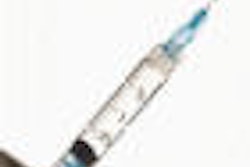The U.S. Centers for Disease Control and Prevention (CDC) has released new guidelines on safe clinical practice for health providers and students who are infected with the hepatitis B virus (HBV).
The report updates the 1991 CDC recommendations on preventing the transmission of blood-borne viruses from infected healthcare providers to patients during exposure-prone invasive procedures, according to a CDC report.
For most chronically HBV-infected providers and students who conform to current standards for infection control, HBV infection status alone does not require any curtailing of their practices or supervised learning experiences, the CDC said. The updated guide outlines criteria for safe clinical practice of HBV-infected providers and students that can be used by the appropriate occupational or student health authorities to develop their own institutional policies, or by an institutional expert panel that monitors providers who perform exposure-prone procedures.
Many interventions, including double-gloving during invasive surgical procedures, have eliminated almost completely the low risk for transmission of HBV (as well as hepatitis C virus [HCV] and HIV) during exposure-prone procedures.
The recommendations include the following:
All healthcare providers and students should receive the hepatitis B vaccine.
Prevaccination serologic testing is not indicated for most people being vaccinated, except for those providers and students at increased risk for HBV infection, such as those born to mothers in or from endemic countries and sexually active men who have sex with men.
Providers who are performing exposure-prone procedures also should receive prevaccination testing for chronic HBV infection. Exposure of a patient to the blood of an HBV-infected healthcare provider, in the performance of any procedure, should be handled with postexposure prophylaxis and testing of the patient in a manner similar to the reverse situation (i.e., prophylaxis for providers exposed to the blood of an HBV-infected patient).
The number of acute HBV infections among providers in the U.S. decreased from approximately 10,000 in 1983 to about 100 by 2009, primarily due to hepatitis B vaccinations.
No transmission of HBV from a U.S. dentist to a patient has been reported since 1987, and no transmission has ever been reported from a dental or medical student.



















